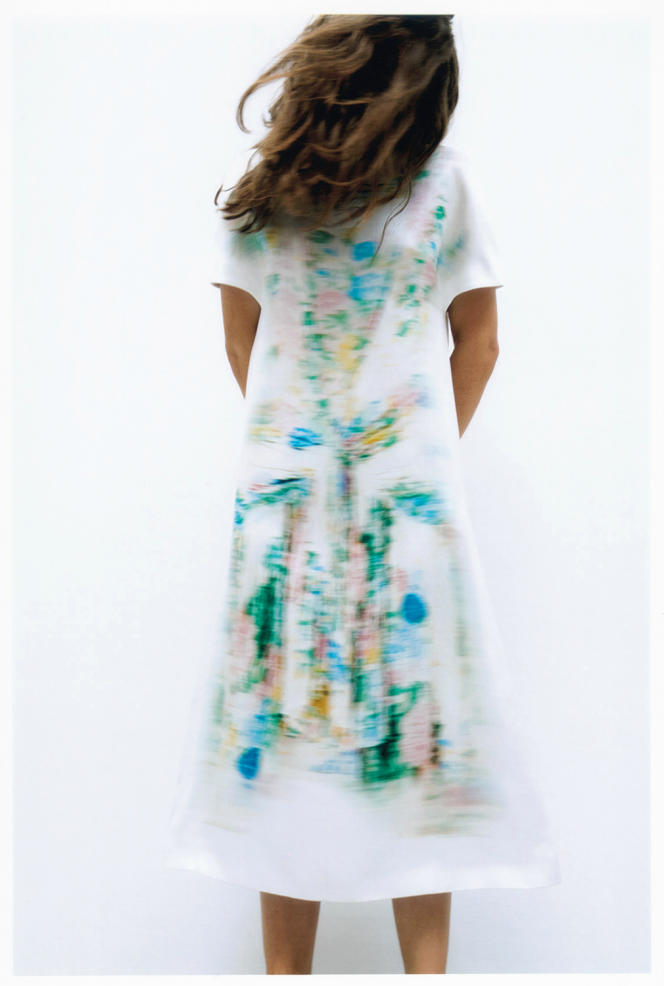Efflorescence, very often fragrant, of certain plants, the word “flower” also evokes, according to Littré, brilliance, freshness, youth, elite or praise. Flora, of course, has inspired patterns since ancient times. During the Age of Enlightenment, the imitation of nature even reached fabrics with great inventiveness.
Flowers constitute a vast repertoire of shapes and colors, constantly enriched by the rise of horticulture, scientific expeditions, still lifes of painters and dazzling fabrics brought from distant countries (silks from China, cottons from India …). All you have to do is see the portraits of Madame de Pompadour, dressed in dresses on which flowers woven, embroidered or reproduced in fabric and in three dimensions bloom. After the Revolution, the fashion for wild flowers emerged – as opposed to cultivated species, associated with the aristocracy – first and foremost the lily and the carnation.
On the sewing side, in the XXe century, certain creators associate their names with their favorite species. This is the case of Gabrielle Chanel and the camellia, a winter flower without perfume or thorns which Coco made an emblem of. Or of Dior and lily of the valley, a true talisman for Christian Dior who, in 1954, dedicated an entire collection (with the famous Muguet dress) to this symbol of spring.
Dresses from the florist
Because the floral motif is rather associated with this season, synonymous with rebirth after winter, including the famous allegory painted at the end of the Quattrocento by Sandro Botticelli shows Flora, a Roman divinity dressed in a marvelous flowered tunic. From the pen of Marcel Proust, it is a replica of this outfit that Swann offers his wife: “A toilet all riddled with daisies, cornflowers, forget-me-nots and bellflowers,” In In the shade of young girls in flowers – whose specialists have noted how the dresses described seem to have come from the florist rather than from the designer.
In origami on cotton or wool, printing on silk or in 3D, flowers also bloomed on the catwalks during the latest fall-winter collections. An out-of-season evocation that the climate crisis and the decline of life force us to analyze differently. As the part of the plant which carries the reproductive organs (and therefore precedes the fruit), flowers compete in colors, shapes and scent to attract pollinators. Today in Europe, 84% of cultivated plant species depend on them..
So it is time to see flowers for what they are, beyond the symbol or decorative motif. A “hidden pillar of the world”, as art historian Estelle Zhong Mengual, who studied flowers with the painter Georgia O’Keeffe, explains: “A world without flowers is a world without life for humans. The flower is one of the fabrics of which our existence is made. »
